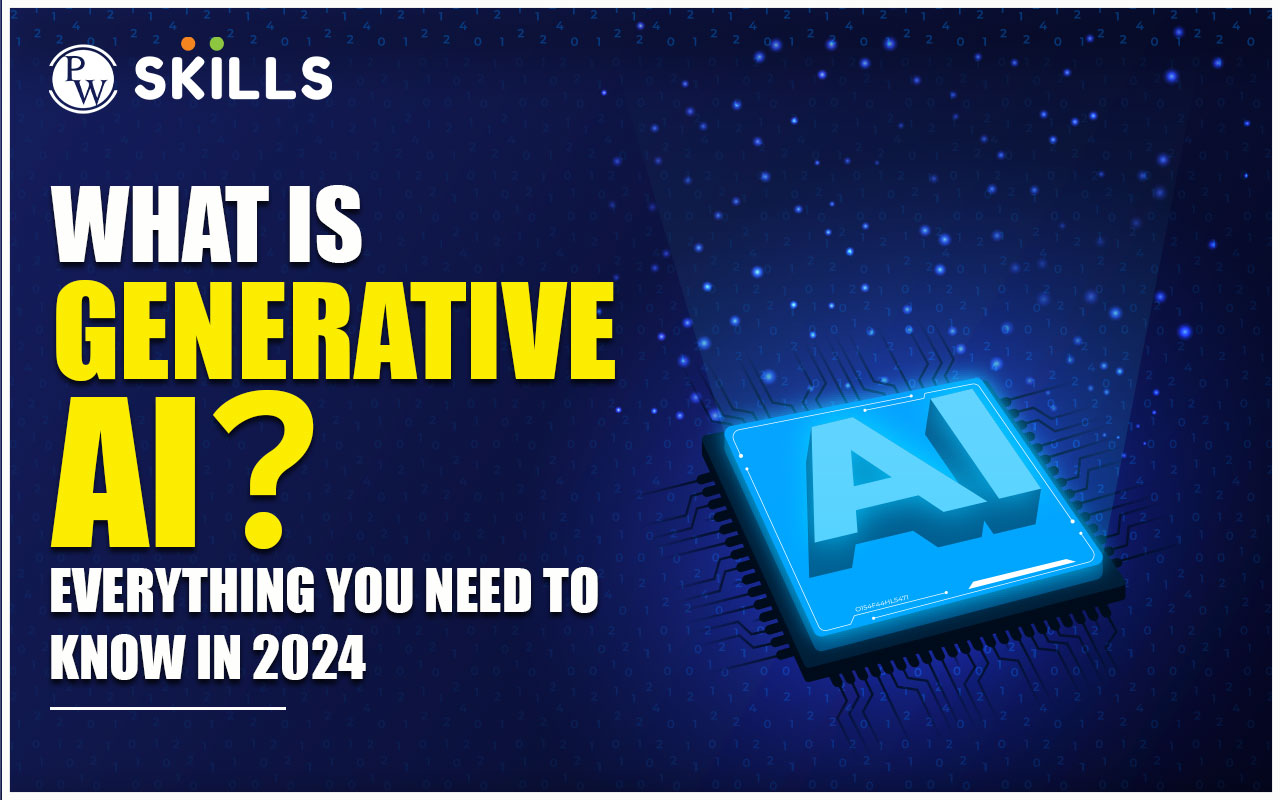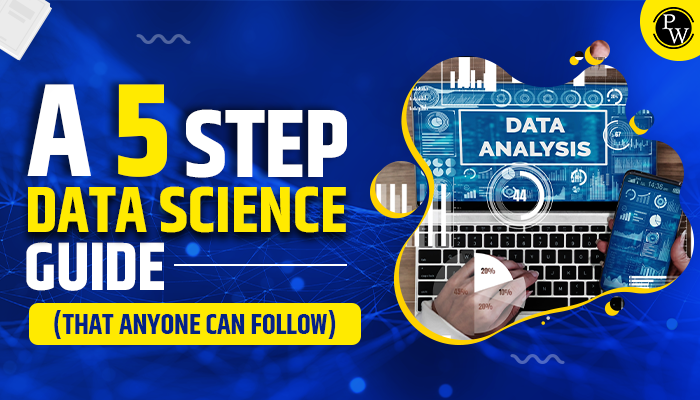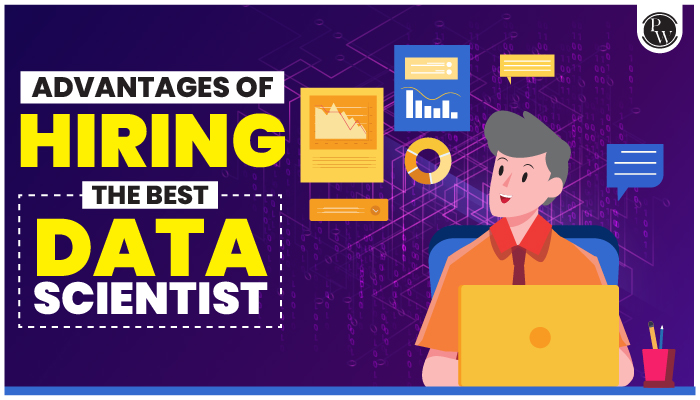Generative AI: As we approach 2024, Artificial Intelligence (AI) has become an increasingly significant part of our daily lives. We are reliant on AI for many different tasks – from assisting us at work to helping drive innovations in healthcare and beyond. But one type of AI stands out: Generative AI.
This powerful technology can go far beyond what conventional AI can do – generating solutions that are entirely unique and often entirely unexpected. In this blog post, we’ll explore what generative AI is, its various practical applications already being explored by prominent tech giants today, as well as the ethical considerations that come with incorporating it into our lives. Join us as we unpack these fascinating topics and gain invaluable insight into how generative AI works!
Taking a course – like Master Generative AI: Data Science Course by Physics Wallah – can help give you a base understanding so you’re prepared to learn in depth as advances continue. Here’s to a future filled with generative AI! With PW’s exclusive “READER” coupon code, you can get a generous discount and start your journey into Generative AI today.
What is Generative AI?
So, what’s the Generative AI Meaning? Generative AI is a category within artificial intelligence technology capable of generating diverse content types, including text, imagery, audio, and synthetic data. The recent surge in interest surrounding generative AI stems from the user-friendly interfaces that simplify the creation of high-quality text, graphics, and videos in mere seconds.
It is important to note that generative AI is not entirely new; it traces back to the 1960s with the inception of chatbots. However, a transformative moment occurred in 2014 with the introduction of generative adversarial networks (GANs), a specific type of machine learning algorithm.
GANs empowered generative AI to craft remarkably authentic images, videos, and audio recordings of real individuals. This newfound capability has opened doors to various opportunities, such as enhanced movie dubbing and the creation of enriched educational content.
However, it has also raised concerns regarding deep fakes—digitally altered images or videos—and potential cybersecurity threats, including deceptive requests that convincingly mimic a supervisor’s directives.
Two recent advancements have played pivotal roles in propelling generative AI into the mainstream. The first is the advent of transformers, which facilitated breakthroughs in language models. These transformers allowed researchers to train increasingly larger models without the need to pre-label all the data.
The rapid progress in developing large language models (LLMs), characterized by billions or even trillions of parameters, has ushered in a new era. Generative AI models can craft engaging text, paint photorealistic images, and even spontaneously generate entertaining sitcoms.
How Does Generative AI Work?
Generative AI, short for Generative Artificial Intelligence, operates based on advanced machine learning algorithms to generate new, realistic content. Its functionality relies on various models and frameworks, with some key approaches being Generative Adversarial Networks (GANs), Transformers, and Recurrent Neural Networks (RNNs).
Generative AI models are trained on large datasets. These datasets can include text, images, audio, or any other type of content the model is designed to generate. The training data is the model’s foundation for learning patterns, structures, and features.
GANs are a popular architecture for generative AI. GANs consist of two neural networks – a generator and a discriminator – that are trained simultaneously. The generator creates new data instances while the discriminator evaluates the generated data against real data.
RNNs are a type of neural network with recurrent connections, allowing information to be passed from one step of the network to the next. While less common in recent generative AI advancements, RNNs are still used in some contexts, especially for sequential data generation.
Also read: How to Build a Generative AI Solutions with This Tutorial?
Generative AI Tools
Below table shows the generative AI tools:
| Generative AI Tools | |
| Generative AI Tools | Description |
| DALL-E | Developed by OpenAI, DALL-E is a generative model focused on creating diverse and creative images based on textual descriptions. |
| StyleGAN 2 | A model designed for image synthesis, particularly for generating highly realistic and high-resolution images. StyleGAN 2 is notable for its ability to control specific visual attributes in generated images. |
| ChatGPT | An OpenAI language model belonging to the GPT family, ChatGPT excels in generating coherent and contextually relevant text, making it suitable for natural language understanding and conversation. |
| GPT-3 | Generative Pre-trained Transformer 3, developed by OpenAI, is a powerful language model known for its vast scale and ability to perform diverse language tasks, including text generation, translation, and summarization. |
| CLIP | Developed by OpenAI, CLIP (Contrastive Language-Image Pre-training) is a model capable of understanding images and text jointly, enabling tasks like zero-shot image classification. |
| T5 (Text-To-Text Transfer Transformer) | A model architecture by Google that approaches various NLP tasks as converting input text to output text, providing a unified framework for tasks such as translation, summarization, and question answering. |
Generative AI Examples
Generative AI tools cater to various modalities, spanning text, imagery, music, code, and voices. Delve into the capabilities of some notable AI content generators across these domains:
- Voice Synthesis Tools: Experience advanced voice synthesis with Descript, Listnr, and Podcast.ai for diverse audio applications.
- Image Generation Tools: Witness the creative prowess of DALL-E 2, Midjourney, and Stable Diffusion in crafting compelling visual content.
- Music Generation Tools: Immerse yourself in the world of musical innovation with Amper, Dadabots, and MuseNet.
- Code Generation ToolS: Streamline your coding process using tools like CodeStarter, Codex, GitHub Copilot, and Tabnine.
- Text Generation Tools: Explore GPT, Jasper, AI-Writer, and Lex for diverse and contextually rich text generation.
- AI Chip Design Tool Companies: Explore the cutting-edge realm of AI chip design with industry leaders like Synopsys, Cadence, Google, and Nvidia.
Generative AI Courses
If you wish to gain the skills necessary to utilize Generative AI successfully, we recommend master Generative AI: Data Science Course by Physics Wallah.
Leveraging Generative AI will provide a unique opportunity to focus on achieving greater efficiency and accuracy in game-changing industries while providing more reliable answers at scale. With increasing demand in the enterprise space for these types of technologies, now is the perfect time to upskill your knowledge base and get ahead in understanding generative AI!
Also read: 15 Best Generative AI Tools To Check Out In 2024!
Applications of Generative AI
Here are some applications and use cases of generative AI:
| Applications of Generative AI | |
| Applications of Generative AI | Description |
| Text Generation | Creating human-like text content, utilized in chatbots, content creation, and creative writing assistance. |
| Natural Language Translation | Translating text between different languages with high accuracy, enhancing communication across diverse linguistic contexts. |
| Fashion Design | Assisting designers in generating new fashion designs and styles, exploring creative possibilities and trends. |
| Video Game Design | Creating virtual environments, characters, and assets in video games, enhancing the realism and immersive experience for players. |
| Content Personalization | Tailoring content recommendations, advertisements, and user interfaces based on individual preferences and behavior patterns. |
| Image Synthesis | Generating realistic and diverse images based on textual descriptions or other inputs, used in art, design, and content creation. |
| Code Generation | Automatically generating code snippets or assisting in software development tasks based on high-level descriptions or requirements. |
Generative AI Models
Generative AI models amalgamate diverse AI algorithms to represent and process content. For instance, when generating text, various natural language processing techniques are employed to transform raw characters (such as letters, punctuation, and words) into sentences, parts of speech, entities, and actions, all represented as vectors using multiple encoding methods.
Similarly, images transform various visual elements, also expressed as vectors. It’s essential to note, however, that these techniques have the potential to encode biases, racism, deception, and puffery present in the training data. Once developers decide on a method to represent the world, they employ a specific neural network to generate fresh content in response to a query or prompt.
Techniques like Generative Adversarial Networks (GANs) and Variational Autoencoders (VAEs) – neural networks featuring both a decoder and encoder – prove effective in generating realistic human faces, synthetic data for AI training, or even simulations of specific individuals.
Recent advancements in transformers, such as Google’s Bidirectional Encoder Representations from Transformers (BERT), OpenAI’s GPT, and Google AlphaFold, have further led to the development of neural networks capable of not only encoding language, images, and proteins but also generating entirely new content.
Also read: 20+ Generative AI Examples in 2024 That Show AI’s Potential!
What are Dall-E, ChatGPT and Google Bard?
DALL-E
DALL-E is a generative model developed by OpenAI. It is an extension of the GPT (Generative Pre-trained Transformer) architecture designed to generate images. Named after the surrealist artist Salvador Dalí and the Disney character WALL-E, DALL-E can create diverse and creative pictures from textual descriptions.
ChatGPT
ChatGPT is a language model developed by OpenAI. It is part of the GPT (Generative Pre-trained Transformer) family, with GPT-3 being one of its notable versions. ChatGPT is trained to understand and generate human-like text based on its input. It excels in natural language understanding and can engage in conversations, answer questions, write essays, and perform various language-related tasks.
Bard
Bard, an initiative by Google, marked an early foray into the exploration of transformer AI techniques for processing diverse types of content, including language and proteins. Google took a pioneering stance by open-sourcing some of these transformer models for the benefit of researchers, although no public interface was initially released.
The Future of Generative AI
The future of Generative AI holds significant promise and is likely to bring about transformative changes across various industries. Advances in Generative AI models are expected to enhance the realism and fidelity of generated content. Whether it’s generating lifelike images, highly coherent text, or realistic audio, future models are likely to exhibit an unprecedented level of quality.
There will be a growing focus on addressing ethical concerns associated with Generative AI, including biases present in training data. Researchers and developers will work towards implementing strategies to mitigate biases and ensure fair and responsible use of generative technologies.
The future will likely see increased collaboration between humans and AI in creative endeavors. Generative AI could serve as a tool for artists, writers, designers, and other creative professionals, augmenting human creativity and providing new avenues for expression.
Continued advancements in natural language understanding will contribute to more contextually aware and linguistically sophisticated Generative AI models. This will result in improved dialogue systems, content generation, and language translation capabilities.
Also read: Age of Artificial Intelligence: Types, History, And Future
FAQs
What are some applications of Generative AI?
Generative AI has various applications, including image generation, text creation, music composition, video synthesis, and more. It is used in fields like entertainment, art, content creation, and even in generating synthetic data for machine learning training.
Can Generative AI create realistic human faces?
Yes, techniques like Generative Adversarial Networks (GANs) and Variational Autoencoders (VAEs) are particularly effective in generating realistic human faces and even simulating the appearance of specific individuals.
What are some risks associated with Generative AI?
Risks include the potential for generating biased or deceptive content, mainly if the training data contains such elements. There are concerns about creating deep fakes, digitally altered images, or videos that may be used maliciously.
How does Generative AI handle bias in training data?
Generative AI models may inadvertently encode biases present in the training data. Researchers are actively developing techniques to mitigate bias and ensure fair and ethical use of generative technologies.
What role do transformers play in Generative AI?
Transformers, such as Google's BERT and OpenAI's GPT, have been instrumental in advancing Generative AI. They enable the encoding and generation of language, images, and other complex data by capturing long-range dependencies and relationships.





